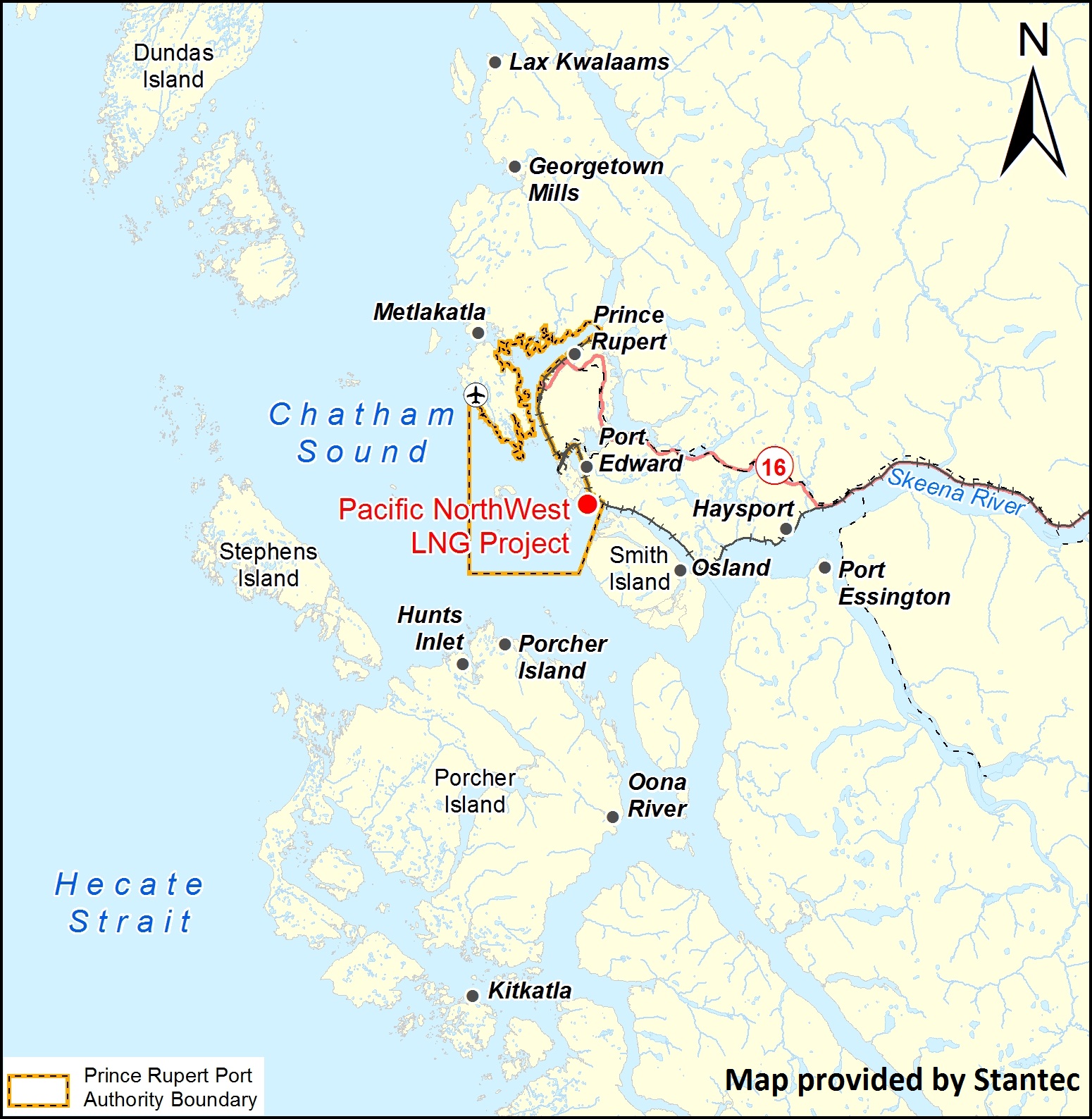
(Photo courtesy of Stantec/Canadian Environment Assessment Agency website).
VANCOUVER—Canada’s environmental review body says greenhouse gas emissions from a proposed liquefied natural gas facility on British Columbia’s north coast pose a significant ecological threat.
The Canadian Environmental Assessment Agency released its draft environmental assessment report on Wednesday for Pacific NorthWest LNG’s planned $3.6-billion export terminal on Lelu Island, south of Prince Rupert.
The report found the project alone would produce 5.28 million tonnes of carbon dioxide annually, while upstream activities would contribute an additional 6.5 million to 8.7 million tonnes. Those levels represent an overall increase in provincial emissions of 8.5 per cent and between 10 and 14 per cent respectively, the document concludes.
“The upstream greenhouse gas emissions … can be characterized similarly to the direct emissions: high in magnitude, continuous, irreversible and global in extent,” reads the report.
Clark has long trumpeted B.C.’s potential to develop the cleanest LNG on the planet, lauding the proposed industry as a worldwide pollution fighter that will replace dirty coal with cleaner-burning natural gas in countries such as China.
Canada’s review agency is soliciting public feedback before submitting its draft assessment to the federal government. Cabinet is expected to decide whether to approve the project by the end of March.
In November 2014, B.C. issued an environmental review certificate for Pacific NorthWest’s initiative, which is backed by Malaysia’s state-owned energy giant Petronas.
Provincial Energy Minister Rich Coleman praised the report because it shows fish habitat isn’t at risk, adding he’s already received feedback from First Nations who say the document has changed their perception of the project.
Speaking to reporters in Victoria, he said the province is working to reduce greenhouse gas emissions in other areas, which has been relayed to the federal government.
“So when I met with the minister last week in Ottawa I just reminded him that if you’re going to look at our standards in (greenhouse gas) give us credit for what we’re already doing,” Coleman added.
The Lax Kw’alaams First Nation has been outspoken in its opposition to the proposal. A spokeswoman said its members were still reviewing the draft review before commenting publicly.
Royal Dutch Shell announced earlier this month it was postponing its final decision on whether to invest in the coastal mega-project amidst plummeting global energy prices.
Pacific NorthWest LNG spokesman Spencer Sproule thanked the federal government in a statement and said the company would review the draft report.
“PNW LNG is committed to building and operating a world-class LNG facility in an environmentally sustainable manner that First Nations and residents in the region can be proud of,” Sproule wrote.
The project’s main sticking point up until now has been over its possible impact on the area’s salmon population, with some aboriginal groups in the region voicing strong protest.
The Skeena Watershed Conservation Coalition expressed its disappointment with the review, adding that the “incredibly superficial” report omitted key, peer-reviewed science.
“Given the scientifically established importance of Flora Bank to Skeena salmon, to say that this project will not have significant adverse impacts on salmon is completely incorrect and shows us once again that the CEAA process is broken,” said Greg Horne in a statement.
The facility would be located at the mouth of the Skeena River, which is considered vital to the ecosystem of B.C.’s second-largest salmon-bearing waterway.
But the federal review concluded that by taking appropriate mitigation measures, the construction and operation of the facility wouldn’t significantly affect either marine or freshwater fish habitat.
Besides emissions levels, the only other significant concern raised in the report was the potential impact on harbour porpoise.